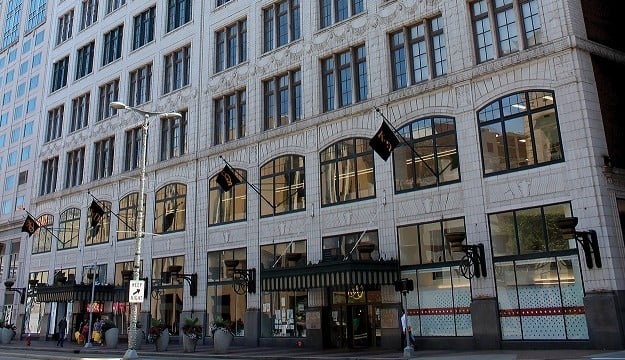
IRVINE, CA—The industrial sector is often tied to growth in GDP, and because we are in a period of stable economic expansion, industrial GDP growth reflects this consistent overall growth, JLL senior managing director Louis Tomaselli tells GlobeSt.com.
A recent report from the frim shows that real industrial GDP growth in Orange County has been relatively stable for the last 10 years, varying from overall real GDP growth by less than 1 percentage point; it's greatest difference reached only 5.5 percentage points. As a comparison, professional, technical and scientific services experienced a less-than-1-percentage-point difference only once during that period and reached a difference of 12.7 percentage points in 2008.
The report goes on to say that for the most part, this trend is expected to remain true, especially in Orange County, since industrial accounts for more than 20% of total output, with potential for only positive change if the sector continues to grow at the rapid pace expected. Demand from e-commerce, 3PL and retail companies is bolstering growth in the industry across all of Southern California, and as a massive consumer of goods and a distribution hub for the rest of the country, this market is likely to continue seeing strong industrial growth.
We spoke with Tomaselli about the region's industrial GDP and why it has been more consistent than other industries in this market.
GlobeSt.com: Why has OC industrial GDP been more consistent than that of professional, technical and scientific services in that market?
Tomaselli: The current theme of the Orange County industrial market is “Industrial is the new black.” The industrial sector is often tied to growth in GDP, and because we are in a period of stable economic expansion, industrial GDP growth reflects this consistent overall growth. This consistency in the industrial sector is a direct consequence of the steady (and incredibly tight) market with strong fundamentals that we have witnessed for many years. Likewise, the Orange County industrial market is a pretty good reflection of the overall state of the local economy since both are experiencing stable economic growth.
With this in mind, industrial, which includes e-commerce distribution, is the largest-growing area since it touches almost every sector: retail, technology, warehouse and manufacturing all are implementing new supply-chain efficiencies with the advent of e-commerce and the way e-commerce delivers to the client. Eight percent of retail sales in 2017 were e-commerce deals versus less than 2% in 2012. However, that represents billions of dollars in sales, and it is predicted that e-commerce will account for 20% of all retail sales in 2022.
GlobeSt.com: What role do you feel e-commerce has played and will continue to play in OC's industrial GDP?
Tomaselli: E-commerce and effective supply-chain management is touching all sectors. In Orange County in 2017, almost half of all companies completing industrial leases had part of their business in e-commerce distribution. E-commerce has definitely been a heavy contributor to industrial GDP and will only continue to boost growth in the sector.
GlobeSt.com: Do you foresee any Black Swan events that might derail this trend?
Tomaselli: Right now, it appears all is good in the US economic picture as far as investors and financials are concerned, as evidenced by the daily breaking of a new record for the NYSE or NASDAQ or S&P index. The Black Swan will be “perception in my opinion.” If the perception becomes we are overly confident, not paying attention to indicators, ignoring any bubbles in certain sectors, it will start to be felt, reported and supported quickly by the fast-breaking news of Twitter and Instagram, et al. If that perception becomes a reality, that will be our next correction—after 10 years, the longest run ever.
GlobeSt.com: What else should our readers take away from your report?
Tomaselli: Consistency is the theme of the Orange County industrial market: large-tenant demand based on companies doing well and expanding, new companies forming and, conversely, not enough existing space to house all those tenant requirements AND not enough new land (no land to build on) to construct the new facilities demanded. Best of all, no major sector that influences Orange County in any future correction, e.g., mortgage in the 2000s or aerospace in the 1990, et al. “Industrial is the new black,” so wear it with confidence.
© 2025 ALM Global, LLC, All Rights Reserved. Request academic re-use from www.copyright.com. All other uses, submit a request to [email protected]. For more information visit Asset & Logo Licensing.







